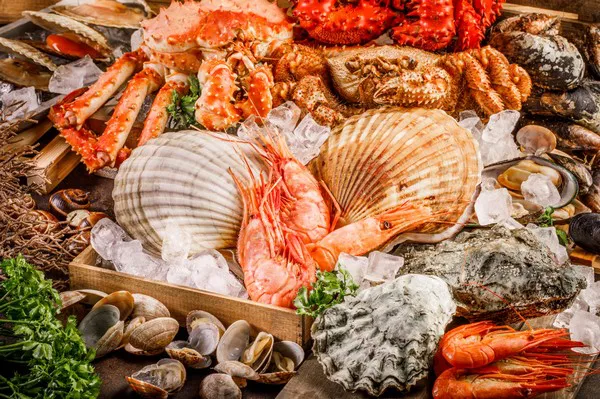Octopuses, with their remarkable intelligence, adaptability, and diverse array of species, captivate the imagination of scientists and nature enthusiasts alike. While many octopus species are known for their impressive size and complex behaviors, some species stand out for their diminutive stature. In this article, we embark on a journey to uncover the secrets of the smallest octopus species and explore the fascinating world of these extraordinary cephalopods.
The Smallest Octopus: The Blue-Ringed Octopus (Hapalochlaena spp.)
The blue-ringed octopus, belonging to the genus Hapalochlaena, holds the title of being one of the smallest and most venomous octopus species in the world. Found in the tropical waters of the Indo-Pacific, including Australia, Japan, and the Philippines, these elusive creatures possess a range of unique characteristics that set them apart from their larger relatives.
Measuring between 5 to 20 centimeters in length and weighing a mere 10 to 100 grams, the blue-ringed octopus is roughly the size of a golf ball. Despite its small size, it packs a potent venom that can be deadly to humans, making it one of the most dangerous animals in the ocean.
See Also: 10 Most Dangerous Ocean Creatures in the World
Habitat and Distribution
Blue-ringed octopuses are primarily found in shallow coastal waters, including coral reefs, rocky shorelines, and tidal pools. They are often encountered hiding among crevices and coral formations, where they hunt for small crustaceans, mollusks, and fish under the cover of darkness.
While blue-ringed octopuses are widely distributed throughout the Indo-Pacific, they are notoriously difficult to spot in the wild due to their cryptic coloration and nocturnal habits. They are most active during the night, venturing out from their hiding places to hunt for prey under the cover of darkness.
Physical Characteristics
Despite their small size, blue-ringed octopuses possess several distinctive features that set them apart from other octopus species. One of the most striking characteristics of these cephalopods is their vibrant blue rings, which they display as a warning signal when threatened or agitated.
In addition to their blue rings, blue-ringed octopuses have a mottled brown or beige body with small papillae or bumps covering their skin. They also have eight tentacles, each lined with suckers that they use to capture and manipulate prey.
Behavior and Diet
Blue-ringed octopuses are ambush predators, lying in wait for unsuspecting prey to pass by before striking with lightning speed. Using their highly flexible tentacles, they capture their prey and immobilize it with their venomous saliva, which contains a potent neurotoxin known as tetrodotoxin.
Despite their formidable reputation, blue-ringed octopuses are relatively shy and retiring creatures, preferring to avoid confrontation whenever possible. When threatened, they may retreat into crevices or bury themselves in the sand to escape detection by predators.
Venom and Defense Mechanisms
Blue-ringed octopuses possess one of the most potent venoms of any marine animal, capable of causing paralysis and death in a matter of minutes. The venom, which contains tetrodotoxin, blocks sodium channels in the nervous system, leading to respiratory failure and cardiac arrest.
Despite the lethality of their venom, blue-ringed octopuses are not aggressive animals and will only use their venom as a last resort when threatened or cornered. They display their blue rings as a warning signal to potential predators, signaling that they are armed and dangerous.
Conservation Status and Threats
Blue-ringed octopuses are currently classified as a species of least concern by the International Union for Conservation of Nature (IUCN). However, like all octopus species, they face a range of threats to their survival, primarily due to habitat loss, pollution, and overfishing.
In addition to these threats, blue-ringed octopuses are sometimes targeted by collectors for the aquarium trade, where they are prized for their striking coloration and unusual behavior. While captive breeding programs are underway to reduce pressure on wild populations, illegal collection of blue-ringed octopuses continues to pose a significant threat to their long-term survival.
Conservation Efforts
Efforts to conserve blue-ringed octopuses and other cephalopod species are underway across the Indo-Pacific and around the world. These efforts include habitat protection, research and monitoring, and public education and outreach programs aimed at raising awareness about the importance of conserving these unique creatures.
In some areas, marine protected areas have been established to safeguard critical habitats for blue-ringed octopuses and other marine species. These protected areas may include restrictions on fishing, boating, and other activities that could harm sensitive marine ecosystems.
See Also: 10 Rarest Marine Animals in the World
Conclusion
The blue-ringed octopus may be small in size, but it serves as a potent reminder of the incredible diversity and complexity of life in the ocean. With its vibrant coloration, potent venom, and unique adaptations, it stands as a testament to the ingenuity and resilience of nature.
By raising awareness about the importance of conserving blue-ringed octopuses and other cephalopod species, we can help ensure their survival for future generations. Together, we can work towards a future where these remarkable creatures continue to thrive in the wild waters of the Indo-Pacific and beyond.
You Might Be Interested In:



























